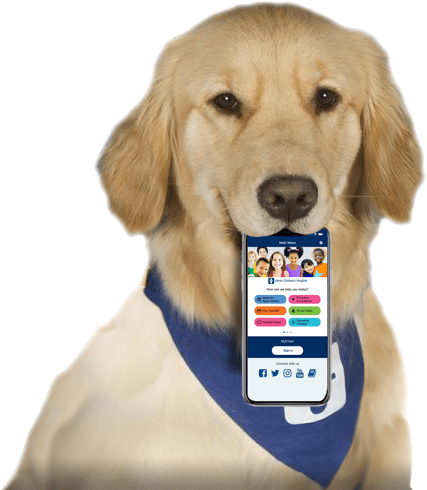Hypoglycemia and Diabetes
What Is Hypoglycemia?
When blood glucose levels (called blood sugar levels) drop too low, it's called hypoglycemia. For people with diabetes, hypoglycemia (hi-poe-gly-SEE-me-uh) happens when blood sugar levels fall below the healthy range set by their doctor.
A blood sugar level slightly lower than the healthy range might not cause symptoms. But very low blood sugar levels can cause severe symptoms that need medical treatment right away.
What Are the Signs & Symptoms of Hypoglycemia?
Mild hypoglycemia can cause such symptoms as:
- shakiness
- a fast heartbeat
- pale, sweaty skin
- headache
- blurred vision
- extreme hunger
- lightheadedness
- tiredness
- moodiness
- nightmares
Severe hypoglycemia can also cause these symptoms:
- confusion
- seizures
- not responding or waking up
Teach your child about the symptoms of low blood sugar and what to do. Even young kids who can't describe their symptoms can learn to tell an adult when they don't feel well. Help your child understand that they need treatment when they don’t feel well. And explain how to find an adult who can help them.
Some people with diabetes can't sense the early warning signs of low blood sugar. They may not recognize they need quick treatment. This can lead to more serious symptoms as blood sugar levels continue to fall. If you think your child can’t sense what low blood sugar feels like, tell the diabetes care team.
What Causes Hypoglycemia?
Hypoglycemia can happen for different reasons. Anyone with diabetes can get low blood sugar, even people who follow their care plan carefully. Sugar levels can drop if your child:
- skips or delays meals or snacks or doesn't eat as much carbohydrate-containing food as expected when taking their diabetes medicine. This happens often in kids who develop an illness (such as a stomach virus) that causes loss of appetite, nausea, or vomiting.
- takes too much insulin, takes the wrong type of insulin, or takes insulin at the wrong time
- exercises more than usual without eating extra snacks or adjusting the dosage of diabetes medicines
How Is Hypoglycemia Diagnosed?
The only way to know for sure if someone has low blood sugar is to test their blood. If you think your child has hypoglycemia, test it if you can. But if you can’t do this quickly, it's important to treat them right away to prevent symptoms from getting worse.
How Is Hypoglycemia Treated?
When blood sugar levels are low, the goal is to get them back up into the healthy range quickly. Here are the basic steps to follow if your child is alert and awake:
- Check blood sugar levels if you can to find out if symptoms are from hypoglycemia. If you can't, don't delay treating your child's symptoms. You can always test after treating your child.
- Give sugar. Offer your child a sugary food or drink that will raise their blood sugar quickly. Regular soda, orange juice, or cake frosting are good choices. Or, give your child a glucose tablet or gel. Follow your child’s care plan for the right amount of sugar to give your child. If you are unsure, give 15 grams of simple carbs, such as 4 ozs. of juice. Symptoms usually stop about 10 minutes after your child takes sugar.
- Check blood sugar level again 15 minutes after giving sugar to make sure the level is no longer low.
You can repeat these steps until the blood sugar level is in the healthy range.
If your child cannot keep down juice or food, can’t wake up or is having a seizure, give glucagon right away. Then call 911. Do not give anything by mouth until they are awake and alert. After getting glucagon, your child will be more alert and feel better within 15 minutes. When your child is alert enough to eat, give sugary food or drink to help prevent their blood sugar from falling again.
If you give your child glucagon, tell the doctor who manages your child’s diabetes that you gave it. An episode of severe low blood sugar could be a sign that the diabetes care plan needs to be changed.
Call your diabetes team if your child is having frequent low blood sugars. Their diabetes plan may need to be adjusted to help prevent future episodes.
How Can Parents Help?
Nearly every child with diabetes will have an episode of mild hypoglycemia at times. Rarely, an episode will be a serious emergency. You can help make this less likely, and be ready if it does happen. Here are some tips:
- Follow your child’s diabetes care plan. This is the best way to keep their sugars in a healthy range. The plan will guide you on the timing of:
- meals
- insulin doses
- exercise
- blood sugar checks
- Track and adjust sugar levels before and during exercise. And make sure your child eats snacks as needed to keep or bring blood sugar levels into the healthy range.
- Keep sugar handy and give it to your child right away if they have symptoms.
- Teach adult family members, caregivers, and school staff the signs of hypoglycemia, when and how to give glucagon, and when to get emergency medical care.
- Get your child a medical ID. Your child should wear or carry identification (like a bracelet or necklace) stating they have diabetes and includes who to contact in case of an emergency.
If you have questions about how to prevent or treat hypoglycemia, or about the diabetes care plan, call your child's diabetes health care team.
Reviewed by: Tal Grunwald, MD
Date Reviewed: Jan 10, 2022
















